paper
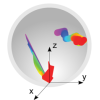 Recent work has found that microtubule rotational diffusion about minus-end attachment points contributes to kinetochore capture in fission yeast, but the relative contributions of dynamic instability and rotational diffusion are not well understood.
Recent work has found that microtubule rotational diffusion about minus-end attachment points contributes to kinetochore capture in fission yeast, but the relative contributions of dynamic instability and rotational diffusion are not well understood.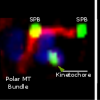 To better understand the role of kinesin-8 proteins in mitosis, we have studied the effects of deletion of the fission-yeast kinesin-8 proteins Klp5 and Klp6 on chromosome movements and spindle length dynamics.
To better understand the role of kinesin-8 proteins in mitosis, we have studied the effects of deletion of the fission-yeast kinesin-8 proteins Klp5 and Klp6 on chromosome movements and spindle length dynamics.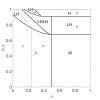 Inspired by experiments on the motion of kinesin-4 motors on antiparallel microtubule overlaps, we analyze a model incorporating the TASEP on two antiparallel lanes with binding kinetics and lane switching.
Inspired by experiments on the motion of kinesin-4 motors on antiparallel microtubule overlaps, we analyze a model incorporating the TASEP on two antiparallel lanes with binding kinetics and lane switching. We study a physical model of filaments, crosslinking motors, and static crosslinkers to dissect the microscopic mechanisms of active stress generation in a two-dimensional system of orientationally aligned rods.
We study a physical model of filaments, crosslinking motors, and static crosslinkers to dissect the microscopic mechanisms of active stress generation in a two-dimensional system of orientationally aligned rods.- Microscopic motor activity causes polarity-dependent interactions between motor proteins and microtubules in reconstituted cytoskeletal active matter.
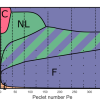 Non-equilibrium active matter made up of self-driven particles with short-range repulsive interactions exhibits collective motion and nonequilibrium order-disorder transitions.
Non-equilibrium active matter made up of self-driven particles with short-range repulsive interactions exhibits collective motion and nonequilibrium order-disorder transitions.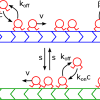 Biopolymers serve as one-dimensional tracks on which motor proteins move. These phenomena have inspired theoretical models of one-dimensional transport, crowding, and jamming.
Biopolymers serve as one-dimensional tracks on which motor proteins move. These phenomena have inspired theoretical models of one-dimensional transport, crowding, and jamming.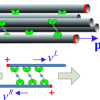 Microtubules and motor proteins can form new “bioactive” liquid-crystalline fluids that are intrinsically out of equilibrium and which display complex flows and defect dynamics.
Microtubules and motor proteins can form new “bioactive” liquid-crystalline fluids that are intrinsically out of equilibrium and which display complex flows and defect dynamics.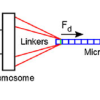 When chromosomes are being separated in preparation for cell division, their motions are slow relative to the speed at which many motor enzymes can move their cellular cargoes and at which microtubules depolymerize.
When chromosomes are being separated in preparation for cell division, their motions are slow relative to the speed at which many motor enzymes can move their cellular cargoes and at which microtubules depolymerize.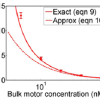 Regulating physical size is an essential problem that biological organisms must solve, but it is not well understood what physical principles and mechanisms organisms use to sense and regulate their size.
Regulating physical size is an essential problem that biological organisms must solve, but it is not well understood what physical principles and mechanisms organisms use to sense and regulate their size.

